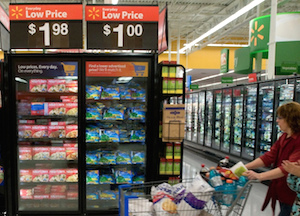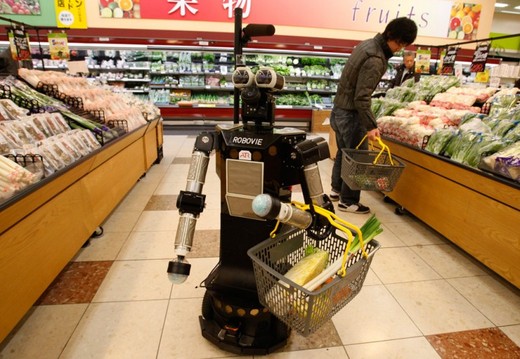
For a very long time, retailers have been able, to a greater or lesser extent, to call the shots in their relationships with suppliers. The scale of big retail, and the lack of alternative ways to get product to shoppers, gave them a significant advantage in their negotiations and dealings. But online shopping changes all that. First the arrival of online retailers shook up the cozy world of bricks and mortar retail. Unilever’s acquisition of Dollar Shave Club shows that subscription shopping, which gives manufacturers another option to cut out the store entirely, is clearly here to stay. Subscription shopping is just another example of the way technology is changing the way people shop. What impact will this have on shoppers, on your brand, and what should you do about subscription shopping?
Cutting out the middle man
There was a time when if a shopper wanted to buy something they’d go to a store, check out the range, make a product choice and take it home. Retailers built an entire business model on their ability to attract vast quantities of shoppers to their stores, and then to charge manufacturers a small fortune for the right to put their product in front of those shoppers. Today, shoppers have more choice about where to shop than ever before; with new store formats, including online. But beyond this, we have seen new ways of shopping emerge, or re-emerge. One of these is subscriptions. Subscription shopping threatens to completely undermine the delicate ecosystem between shoppers, brands and manufacturers.
Shoppers choose
As shoppers have opened themselves up to different and more varied ways of shopping, they now have choices on which brands or categories they are prepared to spend their time on. Before, a shopper had to choose a store, then choose each product, one by one. Now, shoppers can choose where they invest their time. Passionate about meat? Then maybe the shopper will invest time in the meat counter, or at their favorite organic butchers. But what about toothpaste? Does the shopper care enough? Or are they happy with their brand, and just need it at home? This is where subscriptions come in. As a shopper there are categories that I simply do not want to invest my time in. I simply want the product available at the point of consumption. Nothing more, nothing less.
Subscription shopping everywhere
Jon Bird, in his recent blog, highlighted a number of brands now offering subscription services. P&G now have distribution facilities which would allow them to distribute to 80% of the population of America direct. Newcomers such as Razors Direct create niche retail propositions that would have been unheard of five years ago. I get a range of unique and different beers delivered to my door every month. My sister gets a range of fresh organic vegetables delivered to her house every week. I can subscribe to brands such as Colgate on Amazon and get a number of packs delivered to my house every week. All of this is shopping behavior which was hardly conceived of ten years ago.
Subscription shopping changes everything
Subscription shopping could change the way the entire marketing world works. That might sound somewhat hyperbolic, but let’s examine this. Marketing, at its heart, is about influencing the decisions that people make. All marketing, be it advertising, social media, or in-store promotions is designed to affect the decisions that people make. The net impact of subscription shopping is to reduce the number of decisions shoppers make. This reduces the opportunity to market to them, or at least radically shifts the way we must market to them. If I go to a store once every month to pick up toothpaste, then there are twelve opportunities to market to me. If I subscribe for six months, then there are now only two opportunities to influence me per year (and, if the subscription auto-renews, even less). Fewer decisions will transform marketing completely.
Consider the retailer. Whilst they may still have people coming to the store, the average basket size will drop as many categories will be bought on subscription. Revenues might drop, putting pressure on the viability of their stores. If fewer shoppers are deciding what to buy in stores, manufacturers will be reluctant to pay high fees to promote or feature in store, hitting retailers’ profits again.
Brand manufacturers will find it harder to get shoppers to switch; some shoppers will be locked out for months, or for longer, as dominant brands tie them in. And what about agencies? If fewer shoppers make fewer decisions, how viable is the marketing budget? Do brands really need to spend quite so much money winning new shoppers, if they can keep them locked in? And if shoppers are locked in, what is the point of advertising to them?
Of course, the world will go on. Marketing will go on. Whilst decisions get fewer, the value of that decision gets higher (we’re playing high stakes for up to six months’ worth of purchase rather than a couple of weeks). But marketing will have to adapt, and continue to adapt. Marketing will need to understand that talk of ‘the shopper’ is redundant – that shopper behavior is going to become more and more heterogeneous. The world of marketing continues to change; how well prepared are you? For more on how shopping is changing the world of marketing forever, check out “The Shopper Marketing Revolution†– you can pick up a sample chapter here.
Image: Flickr




